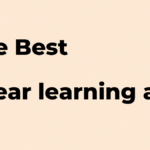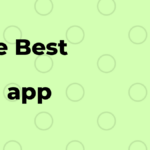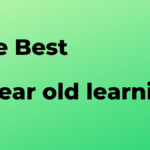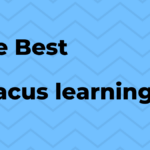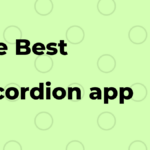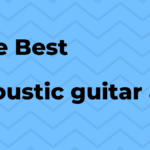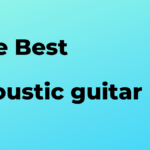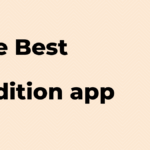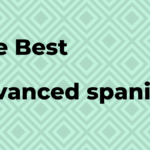People need a book for learning web app because there is no one-size-fits-all approach to learning web development. Different people learn best in different ways, so it’s important to find a book that will work for you. There are many books available on web development, and it’s up to you to find the one that is right for your learning style.
This book is designed to help you learn how to build web applications using the popular Ruby on Rails framework. It begins by teaching you the basics of the Ruby language, and then moves on to teach you how to create a basic web application using Rails. You will learn how to create models, controllers, and views, as well as how to deploy and manage your applications. The book also includes a number of bonus materials, including tips and tricks for working with Rails, a tutorial on creating a blog with Rails, and more.
The best book for learning web app
HTML and CSS for Web Designers
HTML and CSS are the two most important languages for web designers. They are used to create the structure and style of a website. HTML is the markup language used to structure a website, while CSS is used to style the elements of a website.
HTML is made up of tags, which are like mini-programs that tell the browser what to do with the content on a page. HTML tags can be placed anywhere on a page, and they all have specific purposes. For example, you might use an
tag to make your page’s title visible above all other text on the page, or you might use an ![]() tag to display an image.
tag to display an image.
CSS is used to style HTML tags and other elements on a website. CSS allows you to change the appearance of everything from text boxes to entire pages. You can also use CSS to change how browsers display different types of content (like images or tables).
If you’re new to web design, it’s important to understand both HTML and CSS before you start creating websites. However, don’t worry – there’s no need for you to learn them both simultaneously. You can learn one language at a time, and then combine them when you start working on your first real website project.
Building Websites with WordPress
WordPress is a popular content management system (CMS) that enables you to create a website from scratch, or to improve an existing website. WordPress is free and open source software released under the GPL.
WordPress is a very versatile platform, capable of handling everything from small one-page websites to complex e-commerce sites with dozens of pages. It’s also very easy to use, with a well-organized and intuitive user interface.
To create a WordPress website, you first need to download and install the software. Once installed, you can start by creating a new site or importing an existing website into WordPress. You can then customize the site layout and add your own content using the built-in editor or one of the many third-party plugins available.
If you want to make your WordPress site more dynamic and interactive, you can use plugins such as Jetpack or Yoast SEO to improve traffic and search engine rankings. Alternatively, you can use themes provided by WordPress itself or by third-party developers.
Overall, WordPress is an extremely versatile platform that can be used to create any type of website – from small personal blogs to large online businesses. If you’re looking for an easy way to get started building your own website, WordPress is definitely worth considering!
Responsive Web Design with HTML, CSS, and JavaScript
Responsive Web Design is a technique that allows a website to be viewed on any device, regardless of its size. This means that the website can be designed to look good and function well on devices such as phones, tablets, and desktop computers.
Responsive Web Design is based on the principle that a website should be designed so that it looks good and works well on all devices. A responsive design will automatically resize itself to fit the size of the device it is being viewed on. This means that no matter what device you are using, you can access the same content and have it look great.
To create a responsive design, you first need to understand how different devices work. Different devices have different screen sizes and resolutions. To make sure your website looks good on all devices, you need to take this into account when designing it.
Once you understand how different devices work, you can start creating your responsive design. To do this, you will need to use HTML, CSS, and JavaScript. HTML is the foundation of any web page or site, and it contains all of the information needed to display a page on a web browser. CSS is used to style the content of a web page or site, and it allows you to change the appearance of elements such as text, images, and videos. JavaScript is used to interact with websites in order to create user experiences such as animations or interactive elements.
Once you have created your HTML document template and set up your basic CSS stylesheets, you can start adding in your responsive design features. To do this, you will need to use media queries (a type of CSS). Media queries allow you to specify which conditions should apply when testing whether a device is responsive (for example, whether its width is less than or equal to 600 pixels). Once you have added your media queries into your document template,you can start adjusting the layout accordingly based on which condition applies (for example, if the width condition applies then the layout will be adjusted so that all content fits within one column).
Finally,you will need to add in any JavaScript code needed for animations or other interactive features. Once everything has been added in and tested thoroughly (and corrected where necessary),you can upload your final document template onto your website’s hosting server(s).
Building an eCommerce Store with Shopify
If you’re thinking about starting an eCommerce store, Shopify is a great platform to consider. It’s easy to set up and manage, and it has a wide range of features to help you sell online.
To get started with Shopify, you’ll need a domain name and an account. You can register a domain name with Shopify for free, or use one of the many domain name providers that offer discounts when you sign up through them.
Once you have your domain name and account set up, create a new Shopify store. You can use the built-in templates or create your own custom store from scratch.
Once your store is created, add products and pages to it. You can add products by using the Shopify product editor or by using the merchant tools that are available on the merchant portal. Pages include things like product pages, checkout pages, and order forms.
To sell products online, you’ll need to set up shipping addresses and payment methods. You can do this by using the merchant tools that are available on the merchant portal or by using third-party platforms like Shipstation or PayPal Merchant Services.
Once your store is set up and running, start marketing it! There are many ways to market an eCommerce store online, including paid advertising campaigns on Google AdWords or Facebook Ads, email marketing campaigns, and social media campaigns.
Google Analytics for Web Developers
Google Analytics for Web Developers is a powerful tool that allows you to track the behavior of your website visitors. You can learn about what pages are being visited, how long they are spending on your site, and what kind of content is being consumed. This information can help you improve your website’s design and content, and identify areas where you need to focus your marketing efforts.
Front-End Development with AngularJS and Node.js
In this course, you will learn how to build a modern web application using AngularJS and Node.js. You will start by learning the basics of both frameworks, and then move on to creating a simple web application. You will learn how to use AngularJS to create user interfaces, and how to use Node.js to handle networking and storage. Finally, you will create a more complex application that uses both frameworks together.
Building a Website with Ruby on Rails
Building a website with Ruby on Rails is a great way to get started in web development. It’s easy to learn, and it has a wide range of features that can be used to create sophisticated websites.
To start, you’ll need a copy of Ruby on Rails. You can download it from the Ruby on Rails website. Once you have the software installed, you’ll need to create a new project. To do this, open up your Ruby on Rails application directory (usually located at C:Ruby22bin), and type the following command:
rails new myproject
This will create a new project called myproject in your current directory. The myproject directory will contain all the files and folders necessary for building a website with Ruby on Rails.
To begin working on your website, you’ll first need to install some dependencies. To do this, open up your myproject/config/application.rb file and add the following lines:
config . gem ‘ rails ‘ , ‘ ~> 3.2 ‘ config . gem ‘ active_record ‘ , ‘ ~> 3.2 ‘ config . gem ‘ sqlite3 ‘ , ” ~> 1.3 ”
These lines will install theRuby on Rails framework, the Active Record library, and the SQLite3 library, respectively. You can find more information about these libraries on the Ruby on Rails website.
Once you have installed these dependencies, you can start working on your website by creating a new file called app/models/user.rb . This file will contain definitions for all of the models used in your website: users, posts, comments, etc.. In this file, you’ll need to add the following line:
class User < ActiveRecord :: Base end This line defines an object called User , which is used by all other models in your application. You'll also need to add two other lines to this file: def self . belongs_to ( other ) other ||= User . new end def self . has_one ( other ) other ||= User . where ( :id => id ) end
These lines define two methods: belongs_to() and has_one(). These methods are used to define relationships between models in your application. For example, if you wanted to create a model called Post that represented a blog post, you would use belongs_to() to define that Post objects must belong to Users objects (i.e., they must have an id attribute). Similarly, has_one() would be used to define that every Post object must have at least one User object as its parent (i.e., it must have an id attribute). You can read more about these methods on the Ruby on Rails documentation page for Active Record::Base .
Now that you’ve created app/models/user.rb , you’ll need to create app/views/users/_formatted_name . This view will be used by user registration forms submitted by visitors of your website. To do this, open up app/views/users/_formatted_name and add the following code:
<%= formatter %> <%= textarea %> <% end %>
Mastering MongoDB for Developers
Mastering MongoDB for Developers is the definitive guide to MongoDB, covering everything from installation and configuration to advanced features and techniques.
This comprehensive guide starts by explaining the basics of MongoDB, including its architecture and data model. You’ll then learn how to install and configure MongoDB on your own server, as well as how to use its various features.
In addition, this book covers advanced topics such as indexing and querying, performance tuning, and working with third-party libraries. By the end of this book, you’ll be able to confidently work with MongoDB in any development environment.
Developing Mobile Apps with React
React is a JavaScript library for building user interfaces. It lets you create reusable components so that your code is easy to read and maintain. React also makes it easy to create interactive UIs by using stateless components.
To build a mobile app with React, you first need to install the React SDK. Then, you can start by creating a new project in the React IDE. Next, you need to install the React Native CLI. The CLI lets you create and manage projects with React Native.
Once the CLI is installed, you can create a new project by running the following command:
react-native init my-project
The my-project project will be created in your current directory. Next, you need to add the react-native module to your project’s dependencies section in your package.json file. This module contains all of the necessary dependencies for working with React Native.
Next, you need to configure your project’s environment variables. You can do this by running the following command:
react-native initenv my-project && cd my-project && npm config set REACT_NATIVE_ENABLED=true && npm run build
The first command will initialize your project’s environment variables and change into the my-project directory. The second command will enable React Native in your project and run the build script inside of it. Finally, if everything has gone correctly, you’ll be able to run your app on an iOS or Android device by running react-native run –device .
Things to consider when choosing a book for learning web app
-What are the goals of the book?
-What is the target audience?
-What is the format of the book?
-Is it a general or specific book about web app development?
Good Features
1. A book that is easy to read and understand.
2. A book that covers a wide range of topics, including but not limited to design, development, and security.
3. A book that includes exercises and examples to help the reader learn the material.
4. A book that is updated regularly with new information and changes in the web app industry.
5. A book that is available in multiple formats, including PDF, ePub, and Kindle
The best app
1. “Learning Web Applications with Python” by Brett Slatkin is the best book for learning web app development with Python. It is comprehensive, well written, and provides a good foundation for understanding web app development.
2. “Python for Data Science Quick Start” by Wes McKinney is a great book for learning data science with Python. It is concise, well written, and provides a good foundation for understanding data science concepts.
3. “Beginning Python” by Wesley Chun is an excellent introduction to Python that covers both the basics of the language as well as more advanced topics.
People also search for
-Web app
-Application
-Web applicationapps.

Apple fan. Engineer researching topics related to Machine Learning and Artificial Intelligence
